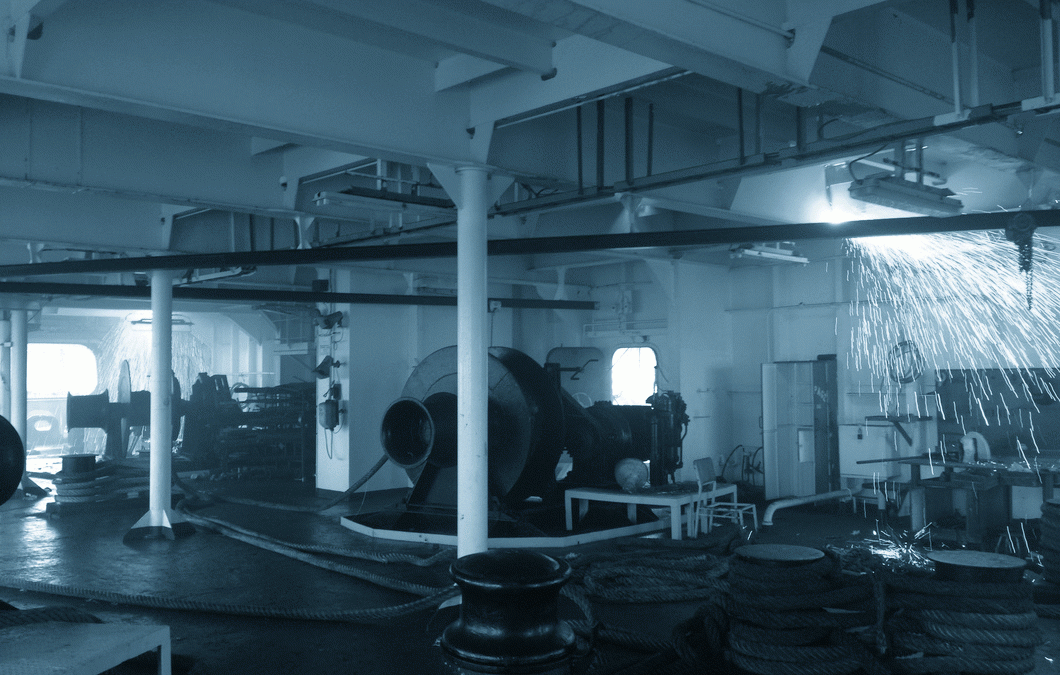In mid-November we received the rather astonishing news that the Rainbow Warrior II was to be scrapped in Bangladesh. What could have been a landmark example of how to plan for and then scrap a ship has turned into a torrid mess, where nobody wins.
Codename ‘Opération Satanique’
Rainbow Warrior II replaced Greenpeace’s flagship Rainbow Warrior, which was infamously sunk in the Auckland Harbour bombing operation carried out by the action branch of the French foreign intelligence services.
This was 1985 and was Greenpeace’s heyday; an organisation focused on saving the whale, standing against nuclear testing, and scaring governments to the extent of the lethal bombing where photographer Fernando Pereira lost his life.
Rainbow Warrior II served the cause, and the cause moved on – from whales to other items, including ship recycling. Greenpeace famously dumped pieces of ships outside the International Maritime Organization (IMO) in a worthy attempt to gain media attention. It worked and helped drive the IMO Hong Kong Convention. It also led to the formation of the NGO Shipbreaking Platform, an organisation primarily set up to lead the fight in place of Greenpeace.
“A fitting retirement for an old warrior”
Rainbow Warrior II came to the end of her seafaring life but was given an honourable semi-retirement when Greenpeace donated the ship to Bangladeshi NGO Friendship. Marprof are not very familiar with Friendship, but they appear to be an organisation dedicated to using ships like Rainbow Warrior II to provide medical attention to remote villages in Bangladesh – a truly fitting retirement and wonderful service for an iconic ship.
Sadly, all good things come to an end and Friendship needed to dispose of her so Rainbow Warrior II was sold into a Bangladeshi yard.
And this is where the story takes a turn for the worse.
The world’s largest cash buyer, GMS, took a foreseeable action; publishing a letter saying that the recycling of Rainbow Warrior II was an endorsement by Greenpeace of the yard in Bangladesh.
Marprof have been to the yard in question on more than one occasion, most recently in 2017, and want to make something clear:
We applaud the efforts made by the owner of the yard and have witnessed surprising improvements in recent years. The yard has found itself to be the ‘middle man’ in this fiasco, widely praised and roundly criticised in the same week. This mess is not their fault.
Greenpeace in a corner
The statements from GMS clearly provoked Greenpeace and created an internal crisis.
They apologised and said the decision was wrong. But, to make things worse,they admitted that they knew about the problem, had included a veto in the conditions of sale – but had ignored it.
The honesty is refreshing, but you can’t just put your hands up and do nothing. To be fair, thus far they have not deleted my damning comment at the foot of their apology on the Greenpeace website. But they did compound the error exponentially; they presumably forced the NGO Shipbreaking Platform into accepting this apology, thereby becoming complicit in the deed.
This would rank as one of the most appalling back stabbings in the recent history of green lobbies. Marprof was pleased not to be a fly on the wall, if indeed Greenpeace told their friends that they were only going to make an emotive apology, and the Shipbreaking Platform was going to post on its news site that the situation was acceptable.
This is a shocking position for the NGO Shipbreaking Platform and, as with the yard in question, Marprof genuinely feel sympathy for them.
No matter what your politics, we all need opposing and challenging views if only to test our own convictions. The NGO Platform have made a huge difference over the years and have undoubtedly helped to raise standards through their campaigns. But how do they show their faces in public now? More importantly, how would their arguments stand up in court when their parent organisation has recently used the ‘beaching’ method of recycling?
Ironically, the whole event unfolded at the same time as the IMO and other stakeholders were visiting the yards in Bangladesh. What were they to make of this? Is the yard acceptable or not?
Action is required, not hollow words
Greenpeace, if you stand by your words then surely you should have done something.
If you support the NGO Platform’s ‘Off the Beach’ campaign, why didn’t you dig into your pockets and get Rainbow Warrior II off the beach? Why didn’t you send in a barge and a crane, and try something else? She is a tiny ship, she can be salvaged.
Remember, she is a 1957 UK built ship. Did you truly have a record of how much asbestos was onboard?
No matter how good the RINA Hong Kong compliance certificate says the yard is, you must know that downstream management of hazardous wastes generated by ships is extremely unreliable in Bangladesh, with insufficient national infrastructure for the storage, transportation and disposal of wastes. Waste management is a well-publicised and key focus of the IMO’s work in Bangladesh.
Biggest losers
So, nobody wins. Aside from everything else, at least this shambles highlights the importance of having a robust ship recycling policy – and the obvious necessity for that policy to be followed.
I originally thought that the NGO Shipbreaking Platform lost the most, but that is far from the truth.
The biggest losers continue to be the ones we are meant to be protecting – the workers and the environment. This continual mixed message helps no one.
Image source: commons.wikimedia.com


Recent Comments